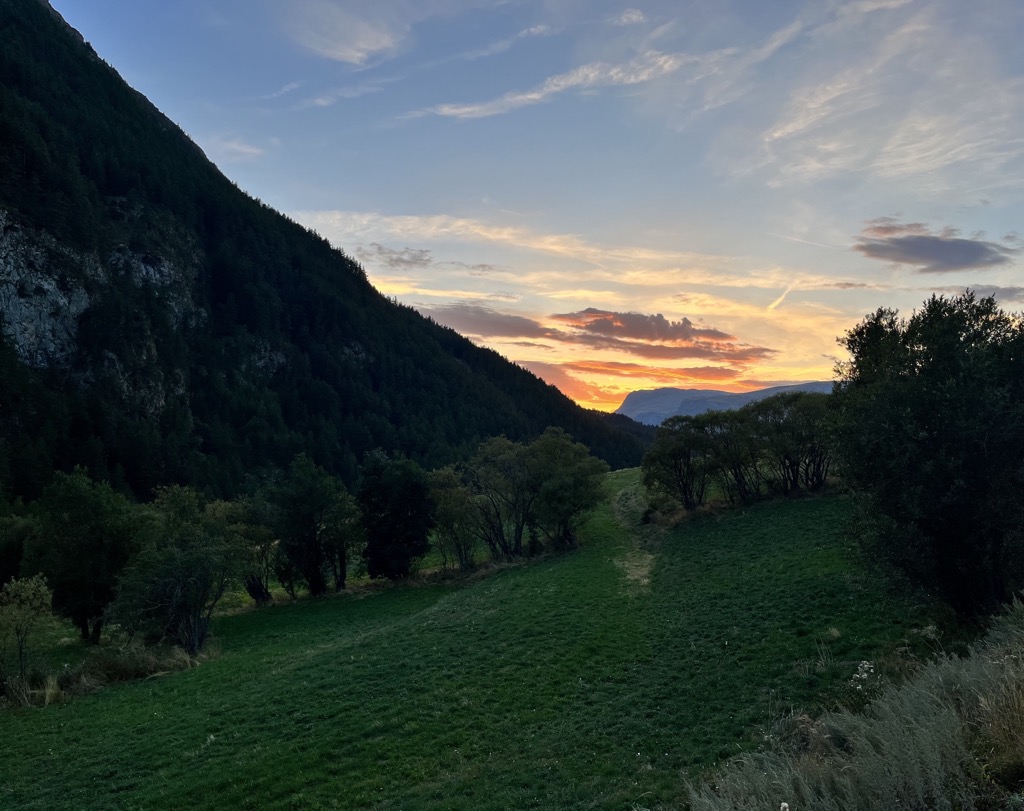Choosing the Right Hike Using the PeakVisor Mobile App
By Sergei Poljak
Introduction
Spring has sprung across the far reaches of the Northern Hemisphere and even more so here in the Alps. May has offered warm sunny days as well as rain and high-elevation snow showers. Mother Nature is preparing to herald in another hiking season, replete with verdant green grasses, wildflowers, and still-white peaks that define May, June, and July.
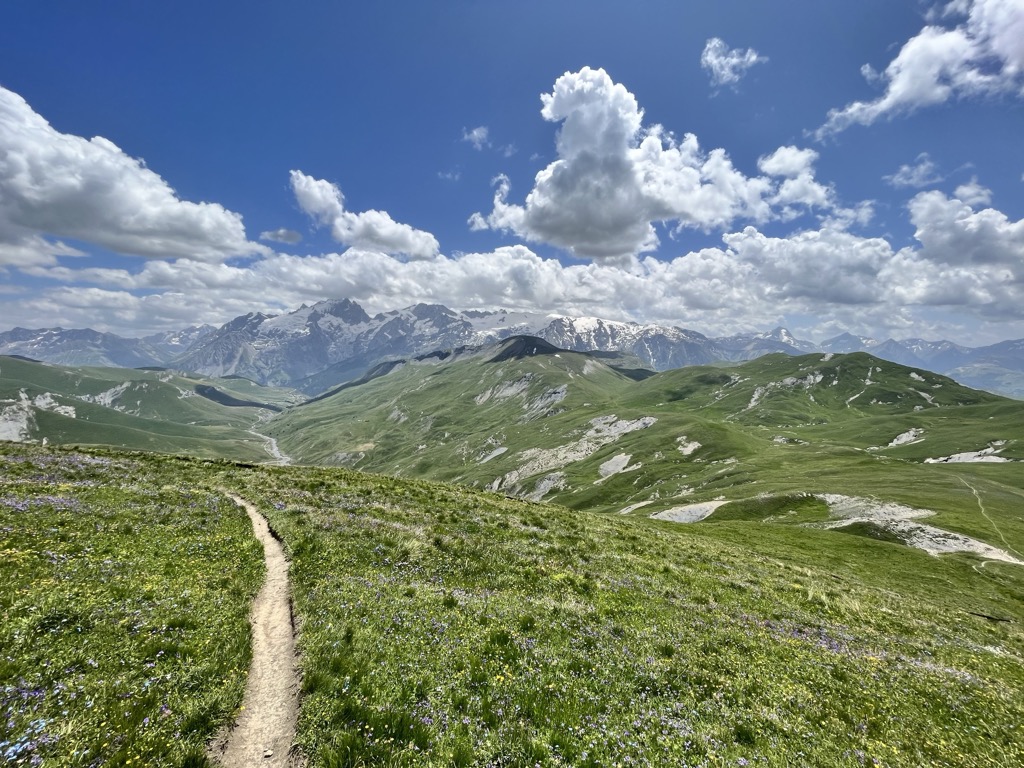
In Europe, late July and August are the high season, but, increasingly, the early season is the ideal time to explore the mountains. First, the dazzling displays of wildflowers peak in June and generally die off in July, except for the highest peaks. Temperatures are also more moderate this time of year, and if you’ve ever tried to scale a peak in full sun, you’ll understand that even 20℃ (68℉) is hot. Other advantages include nearly non-existent crowds, plenty of water supplies en route, and extraordinary daylight. In Zurich, Switzerland, located somewhat at the center of the Alps, the sun doesn’t set until 9:26 on the Solstice, and nightfall isn’t until well after 10 p.m.
Early-season hiking disadvantages include mud, less stable weather, snow at upper elevations, and closed refuges, especially in May and June. For these reasons, carefully planning the right hike is as important as fitness to reach the summit.
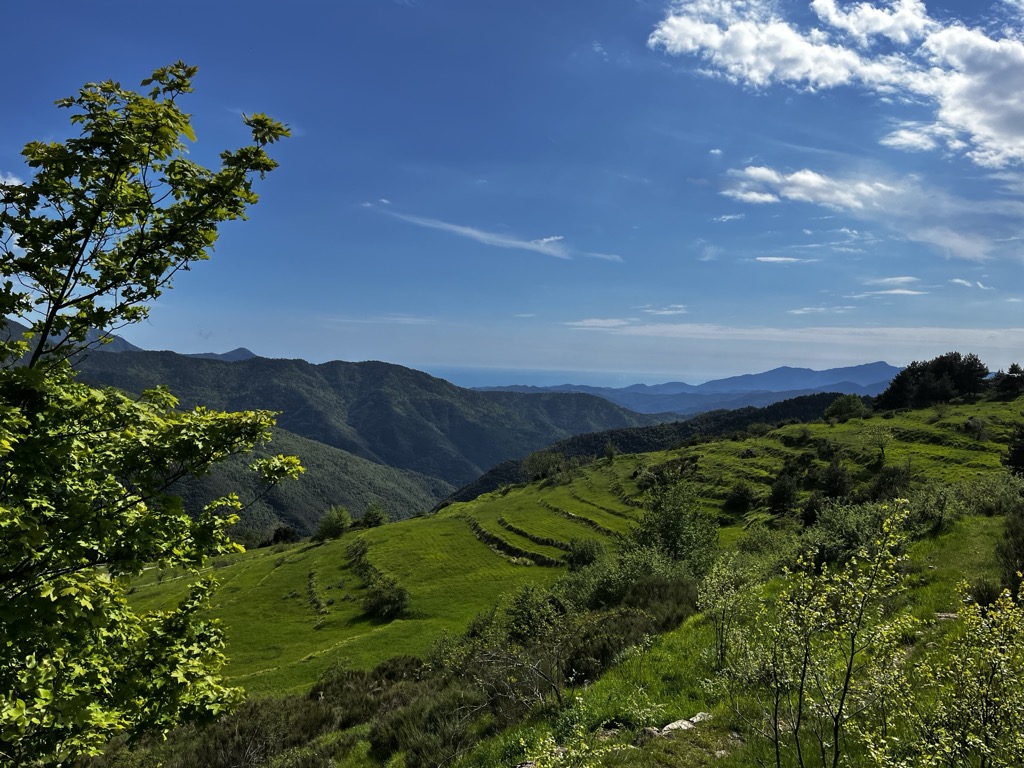
There's no reason to worry for those who can’t get time off until later in the summer. There are still plenty of adventures to avoid the crowds in the Alps, and you’ll have stable weather and less snow to deal with up high.
At PeakVisor, we’ve been exploring the Alps for years and have compiled some of the lessons we’ve learned. Moreover, we’ve tailored our mobile app to be a one-stop shop for hikers looking to plan their next adventure. Additionally, all features on our desktop hiking planner are available free of charge, with no ads. Without further ado, let’s dive in.

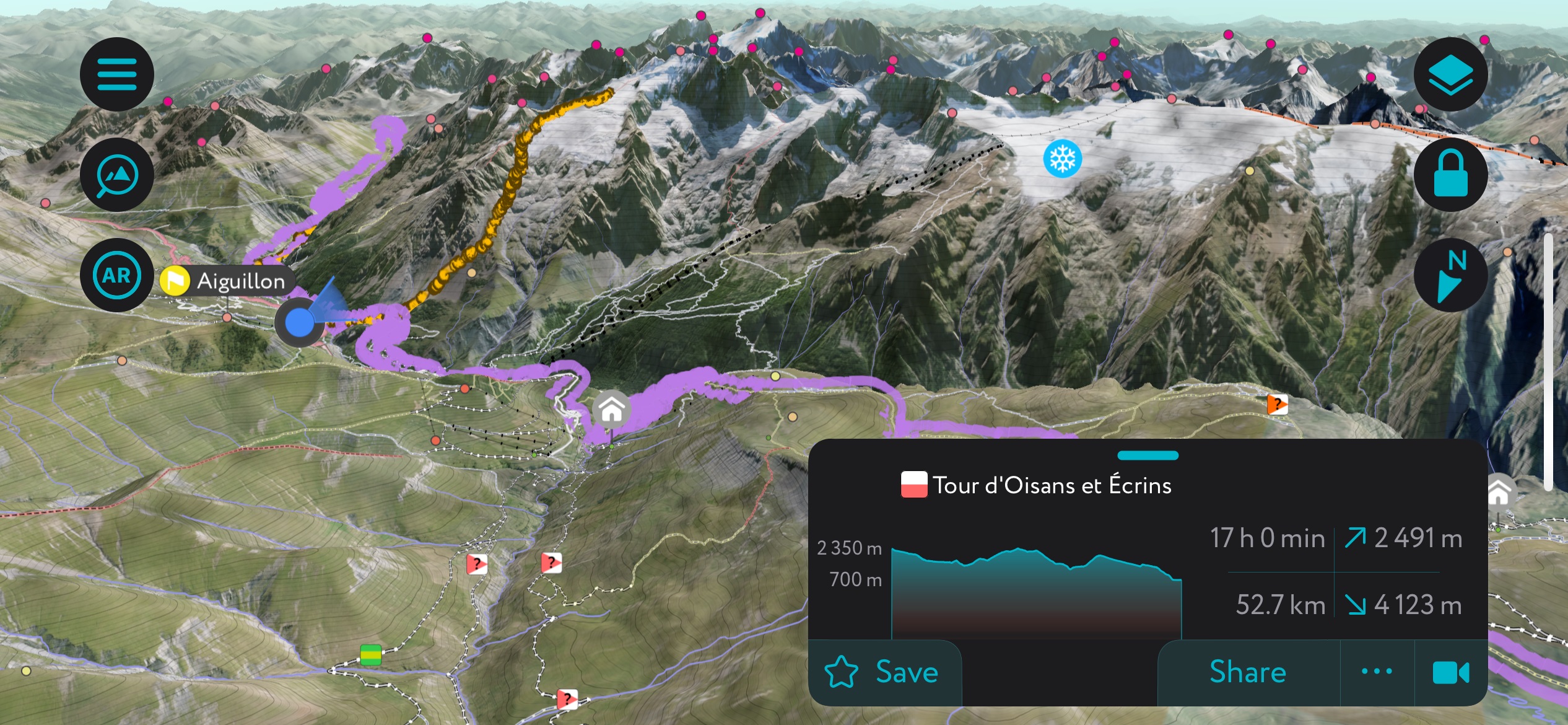
Tips for Planning Your Next Hike
Whether it’s May, October, or anything in between, we’ve got some tips for planning the ultimate hiking adventures in the Alps.
Summits vs. Lakes vs. Viewpoints: Choosing a Rewarding Destination
People naturally love a goal or destination, and the best hikes always have some prize waiting, whether it’s a summit, lake, viewpoint, ridgeline, or refuge. Regarding refuges, the Alps are unique; you can hike to a high mountain hut, enjoy a delicious meal, and descend (or continue on) afterward.
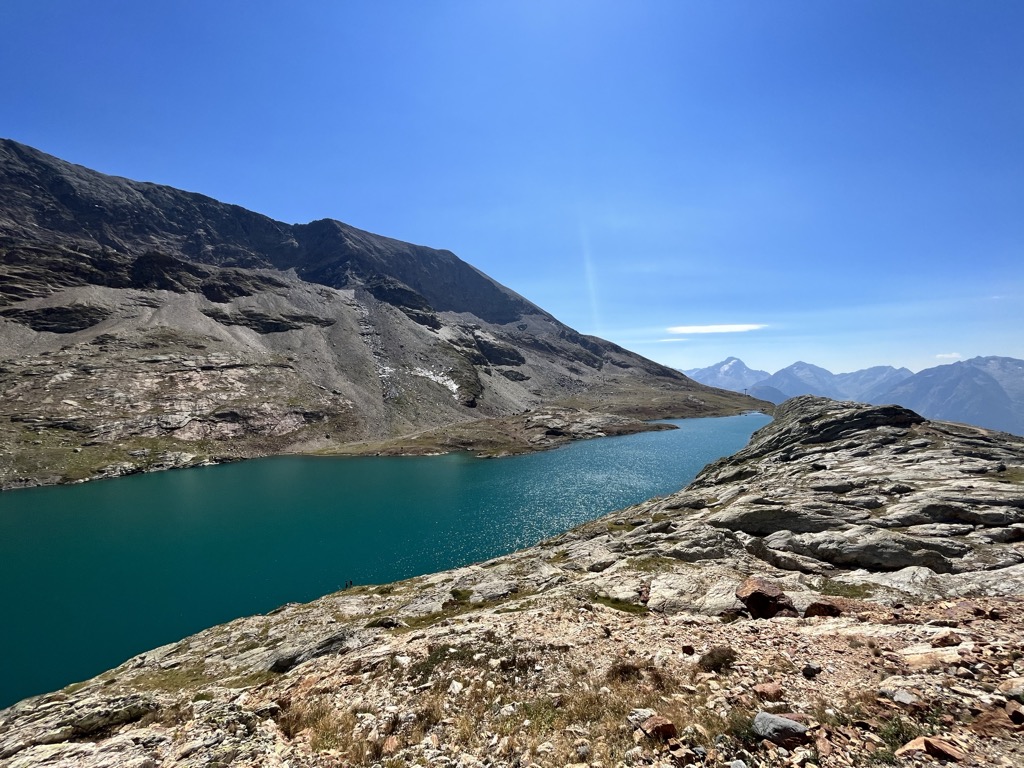
The bigger the prize of a hike, usually the more difficult it is to plan. The high mountains are subject to numerous variables that don’t apply in the valleys. Here are a few things to consider.
- Snow. In the Alps, most summits above 3,000 meters are partially snow-covered into August and beyond. You may even encounter permanent snowfields called nèvès.
- Weather. Weather is inherently unpredictable in the mountains. The high peaks interact with and influence the atmosphere, creating rapidly changing and severe weather that you wouldn’t expect in the valleys. Even our most sophisticated forecasting tools still have trouble predicting weather in the mountains, especially above treeline. Moreover, while getting caught in a storm in the valley is merely an inconvenience, it can be life-threatening in the alpine. Plunging temperatures and lightning strikes are especially common above treeline.
- Fitness. How fit are you? Regardless of your fitness level, there is a hiking destination for you. However, it’s important to know your limit and not attempt objectives—particularly alpine summits—that are out of reach. Nevertheless, whether you can hike 300 m (1000 ft) or 3000 m (10,000 ft), there’s an objective out there for you.
- Technical Ability. Hiking is, by definition, far less technical than mountaineering. Most hikers just want to walk up and down the mountains without special gear or skills. However, some hikes in the Alps require technical skills and gear. You can have snow crossing, which may require spikes and an ice axe or short scrambling sections. Anything more than this ceases to be rated as a “hike” and falls into mountaineering ratings. Here is the best description of difficulty ratings for hikes in the Alps. Generally speaking, summits and ridgelines are the most technical, while lakes and refuges are often more accessible.
Lakes are often the best call if you’re reading this article in May and itching to get into the mountains. Lakes provide the perfect destination for any hike and melt out far earlier. Meanwhile, summits in the Alps can be locked in with snow until August or longer. Most refuges open in June and close in September. In lower valleys, you can often access an excellent viewpoint all year round.
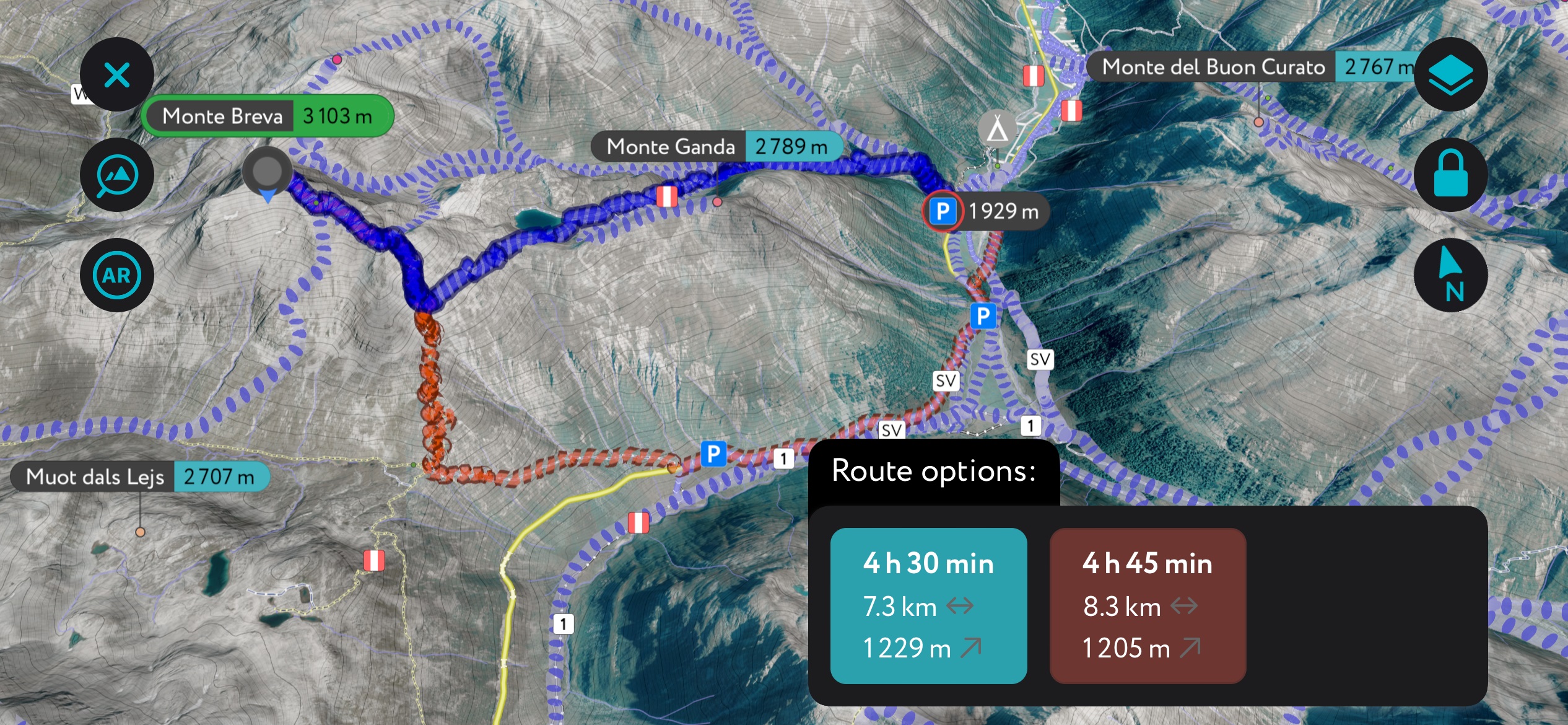
Check the Snowline
The snowline is one of the most important variables for any alpine hiker. Snowfields can turn a relatively easy hike into a death trap. Moreover, it can be hard to obtain information on which snow crossings remain. In late summer, the snowline may be at 3,000 m (10,000 ft), but gullies and sheltered areas still hold snow crossings below that elevation.
The PeakVisor app shows snow depth (and, in winter, the most recent snowfall) from hundreds of weather stations across the Alps. It’s an excellent tool for winter ski touring and also helpful for hiking in the early season. In France, I also use the website metaskirando for detailed weather and snow observations. Similar sites will be available in Italy, Switzerland, and Austria.
You can also call the area's tourist offices, guide services, and refuges for information on hiking conditions.
Managing Snow
After the mega precipitation year in 2024, there will be snow in the alpine well into August. So, rather than avoid hikes with snow, hikers will have to come prepared. Most snow crossings are easy with one simple piece of gear: small spikes that attach to the bottom of your hiking boots. Usually, after dozens of melt and freeze cycles, the remaining summer snow becomes hard, and you won’t sink in too much. For anyone looking to hike above 2,500 meters (8,300 ft) over the next few months, I recommend bringing spikes along just in case.
Snow crossings can be dangerous, even on easy hikes. Summer snow is often very hard and slick, and a fall can result in a slide-for-life down the mountainside. Usually, the danger is effectively mitigated with just spikes. An ice axe is also helpful for some hikes, mostly bigger summits. Ice axes provide additional self-arresting capabilities and support on steeper, longer snow climbs. A “classic-length” axe with a straight shaft is best for hikers. The best fit is from your thumb to your ankle; 70 cm is standard.
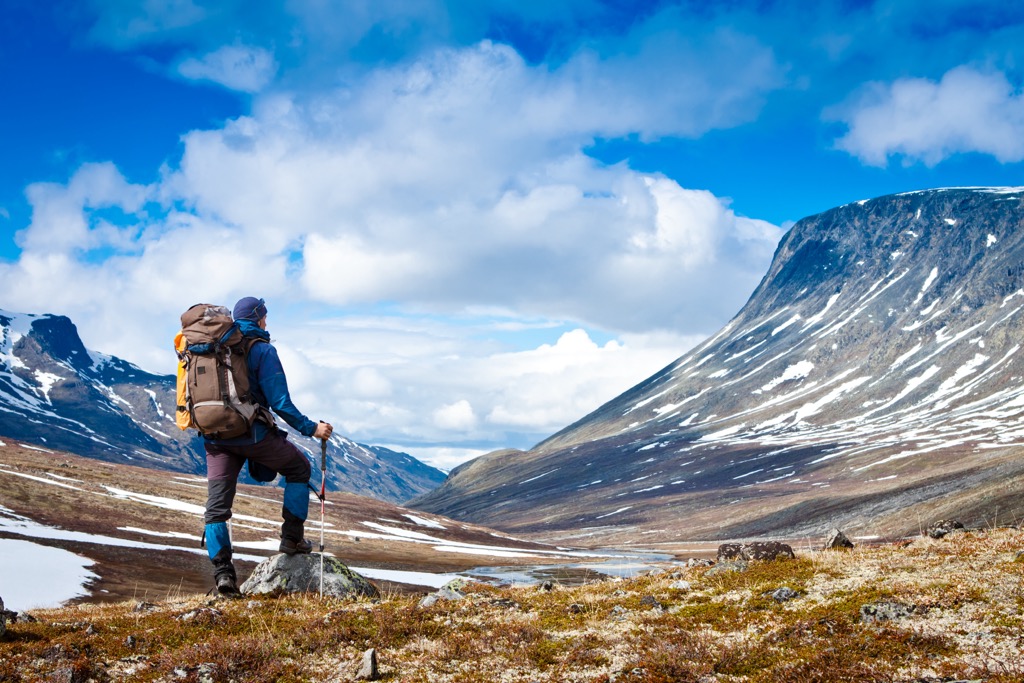
Checking the Weather
Sure, this sounds obvious. Most people check the weather before they go hiking. However, it’s common just to check the weather in the valleys and assume that it will be the same in the mountains. You can get away with this only so many times before you pay the price. In reality, the Alps feature so much vertical that the weather up top can be completely different from that in the valley, in both summer and winter.
Everyone knows it’s colder up on the peaks than in the valleys. On the other hand, fewer people understand alpine precipitation, which is how so many folks get caught unprepared in nasty weather. Mountains are a magnet for storms, particularly thunderstorms in the summer and orographic snow in the winter. Say, for example, that you check the weather in the valley and see a 10% chance of storms. It seems unreasonable to abandon your adventure for that, but if you check a point forecast for the alpine, it can be much higher, often 60% or more.
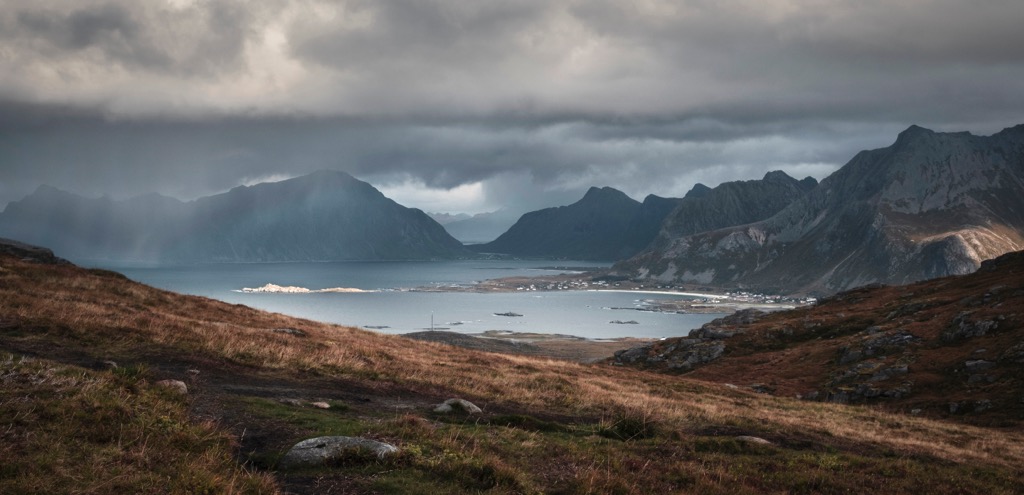
Meanwhile, in the winter, these differences can be even more pronounced. In the Romanche Valley of the Western French Alps, the winter of 2024 was particularly impressive in this regard. I saw days where the mountains received 50 to as much as 70 cm of snow, and the valleys received almost nothing.
No weather forecast is perfect, and you must always be prepared for the worst. However, PeakVisor solves this issue by offering point forecasts for literally any location in the mountains. All you have to do is select a point, whether a refuge, lake, summit, or just a random coordinate, and we’ll generate a three-day forecast for that spot.
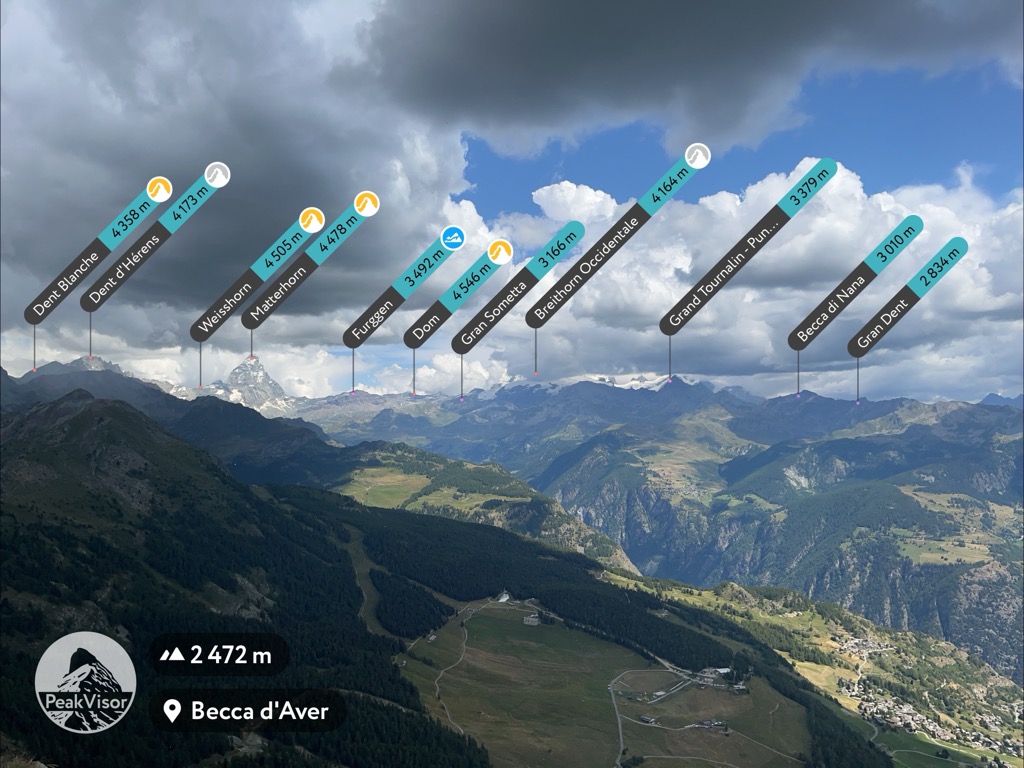
Water Supply
In addition to unexpected storms, dehydration is one of the most common and dangerous scenarios that can arise on a hike. It’s critical to always bring enough water, but it’s hard to know how much is enough, and water is heavy, adding unwanted weight to big climbs.
The PeakVisor app shows route time estimates, which can be helpful for gauging water consumption. For every two hours on the trail, you should bring one liter of water per person.
Personally, I prefer to carry less water when I can. I always carry a ceramic water filter for long hikes, which means I can be hiking all day and only have a maximum of one liter. I highly recommend this approach, as these water filters are lightweight and not overly expensive. Moreover, in the Alps, you’ll unlikely become seriously dehydrated; there are enough bodies of water, whether lakes, rivers, or snowmelt. However, never drink the water outside of a filter. Most areas of the Alps are subject to significant livestock grazing, and the streams have high levels of bacteria.
For longer routes, I’ll try to plan my hike with the app beforehand to ensure I’ll pass enough water on the way. If there’s a long ridge or alpine section where I suspect there isn’t much water, I’ll be sure to take more.

Look for Open Cable Cars
The Alps are massive, with towering peaks and very low-elevation valleys below. The sheer difference in vertical can make it challenging to get to the best panoramas just by foot. That’s where the extensive network of cable cars comes into play. The Alps are the most developed mountain range in the world as far as lift infrastructure goes by a long shot. It’s not ideal from an ecological standpoint, but it makes getting to the high places much more straightforward.
Cable cars in the Alps are just as popular in the summer as in winter. They slingshot sightseers, hikers, climbers, and bikers up into the high peaks. From there, you can choose your own adventure. You’ll still be getting plenty of exercise; usually, these cable cars make hikes attainable within the standards of mere mortal fitness.
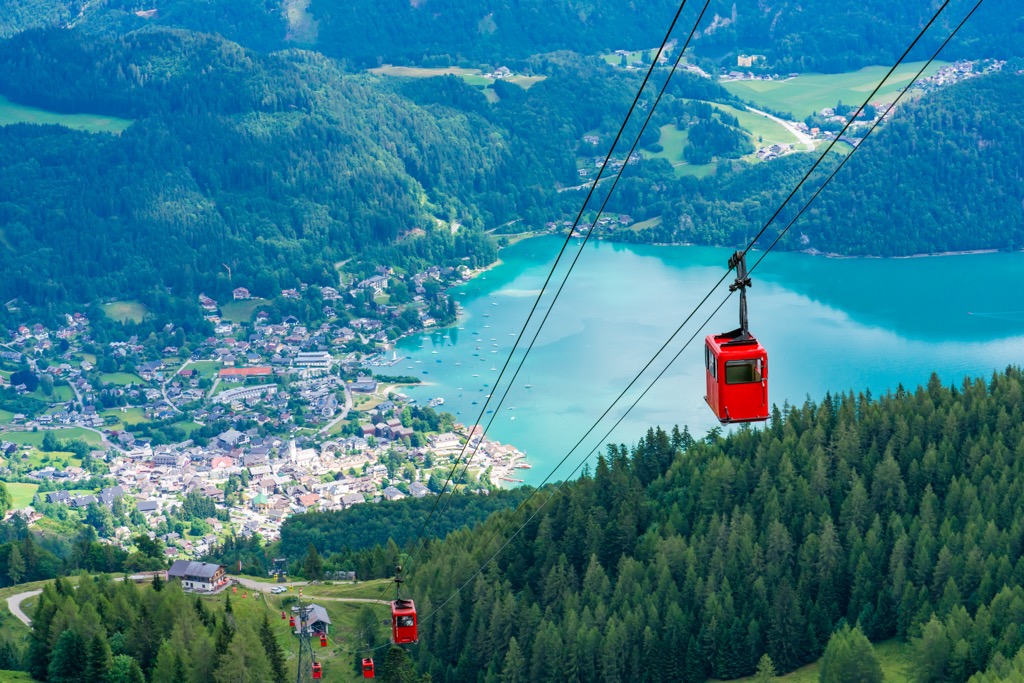
The cons of cable cars are that they are not always open. They don’t usually open until June and often close before September. That leaves out some great hiking months. And, of course, they cost money. One-way rides are much cheaper than ski lift tickets, but for a large group or family, the cost can add up fast.
You can use the PeakVisor mobile app to plan your trip around a cable car ride. We’ve listed nearly all cable cars, with schedules included for most.
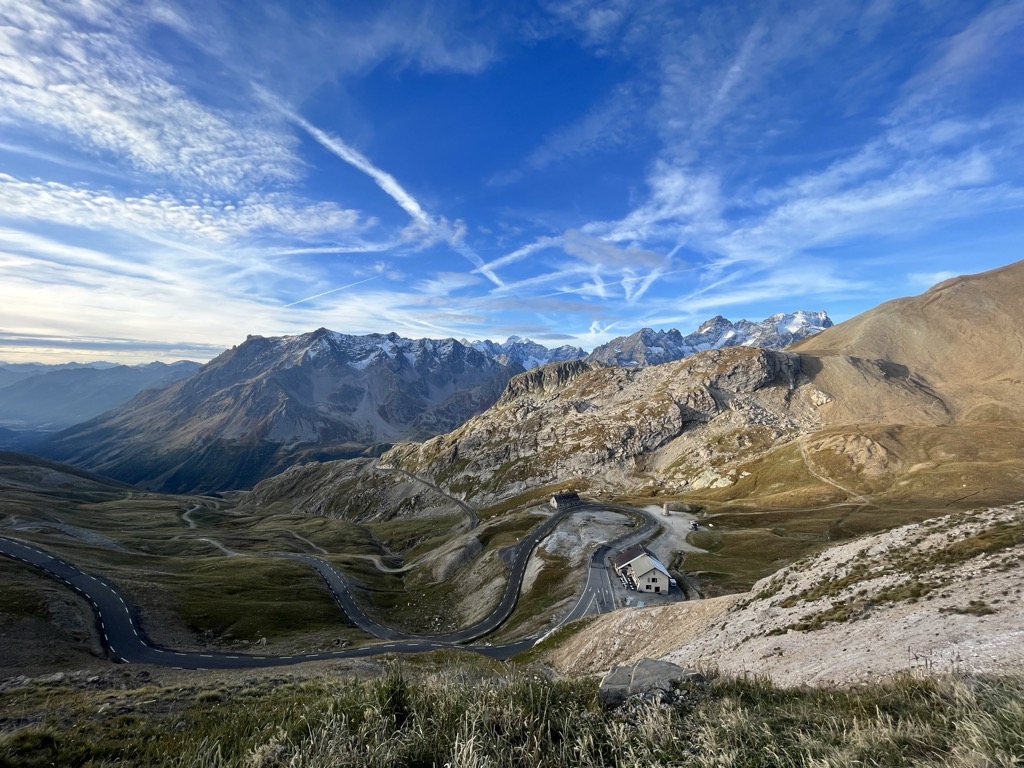
Stay in Refuges
Refuges are the cultural zenith of the European Alps. Nowhere else on the planet can you find so many huts in the mountains. Whether you’re hiking in France, Italy, Switzerland, or Austria, there are sure to be plenty of mountain refuges.
Refuges offer plenty of options. Some are like restaurants, serving lunch to passing hikers. Others offer overnight stays with dinner included. There are also “unguarded” refuges if you just need a roof over your head, and many guarded refuges will have an unguarded space during the off-season.

The abundance of these mountain huts makes it possible to take long multi-day hikes and carry little more than a backpack with water, clothes, and snacks. This is a more appealing proposition for most people, but you can still wild camp in many parts of the Alps if you don’t want to pay for refuges.
The PeakVisor mobile app shines in many ways, but it is hands down the best resource out there for locating refuges and obtaining contact information. You see, most refuges require you to call, although some now allow visitors to reserve online (and reserve you must; these get booked out during high season). PeakVisor’s information panel links you to the phone number and website of most refuges. We also include a schedule for each refuge so you know whether or not it’s in season.
A final word of caution: refuges often close unexpectedly. These are, after all, the mountains. A flood, unexpected staff illness, or solar panel malfunction are reasons a refuge could have to shut its doors for a few nights. PeakVisor stands behind its schedules, but you should always call in advance to make sure everything is operating as planned.
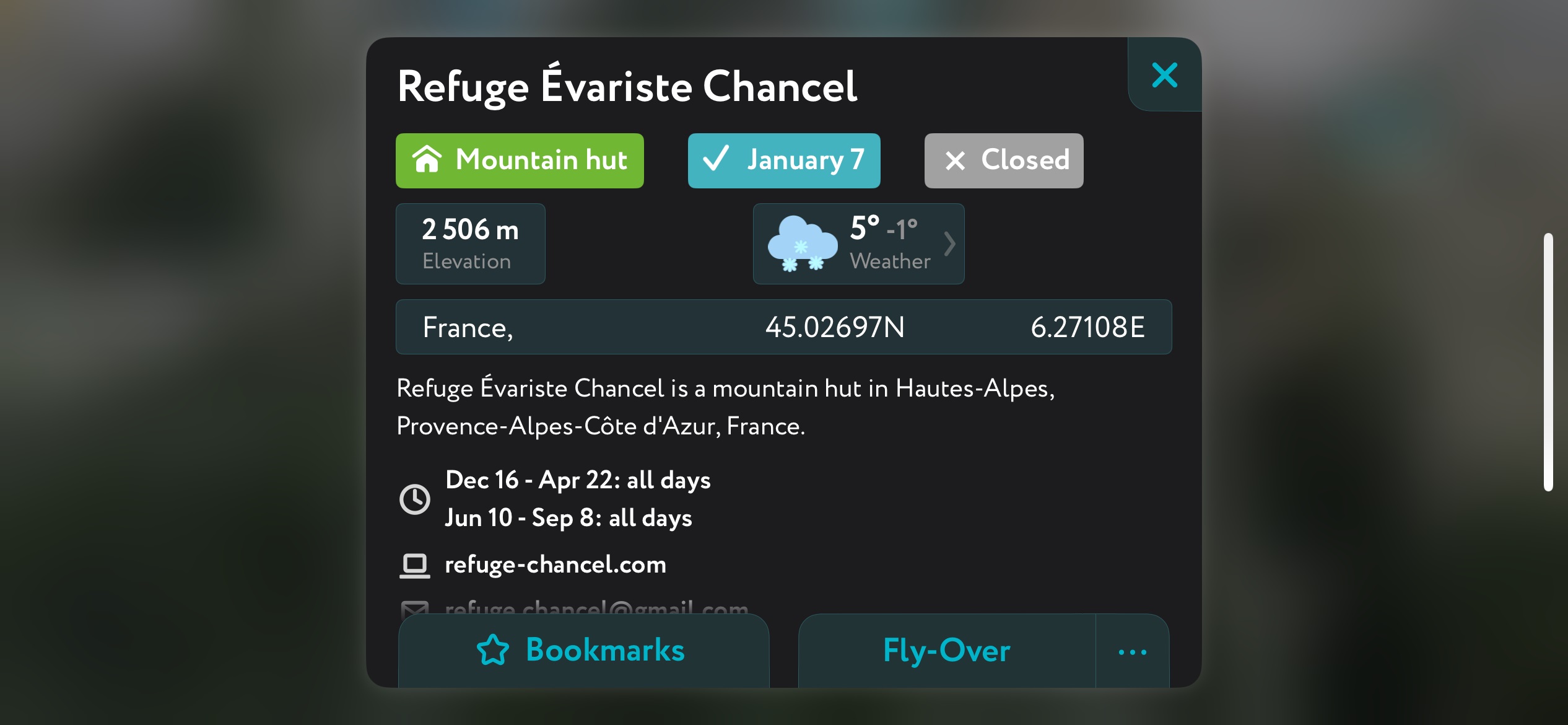
Boots vs. Shoes
This section may seem out of place, but it’s worth including that the best footwear for hiking in the Alps is a proper hiking boot that covers the ankle. Hiking shoes are becoming the norm in many parts because of their lightweight and comfort factor. I agree that shoes are way better in many scenarios. However, there are a number of reasons that hiking boots are better in the Alps, especially during the early season.
- The higher altitudes have a lot of scree, i.e., lots of loose rock. It’s best to have a shoe that covers your ankle.
- Many trails in the Alps are steep and switchbacked, and it’s easier to roll your ankle wearing shoes. Hiking boots have more ankle support.
- Most spikes are designed for boots, which are necessary for many hikes because of snow crossings. Boots are also more water resistant (if you’ve been hiking long enough, you know that no boot is truly waterproof) and suited for frequent snow crossings.

Conclusion
That concludes our tips for hiking in the Alps this season. The Alps can’t offer wilderness and solitude the way some places can. Nevertheless, I think there’s a strong argument that the young, jagged peaks, the access, and the cultural immersion make this region the best hiking destination on Earth. Fortunately, it’s right in the backyard for hundreds of millions of Europeans, and the sheer abundance of trails means there’s always room to spread out if you know where to look. Speaking of knowing where to look, don’t forget to download the PeakVisor app to take your exploration to the next level. We’ll see you out there!
